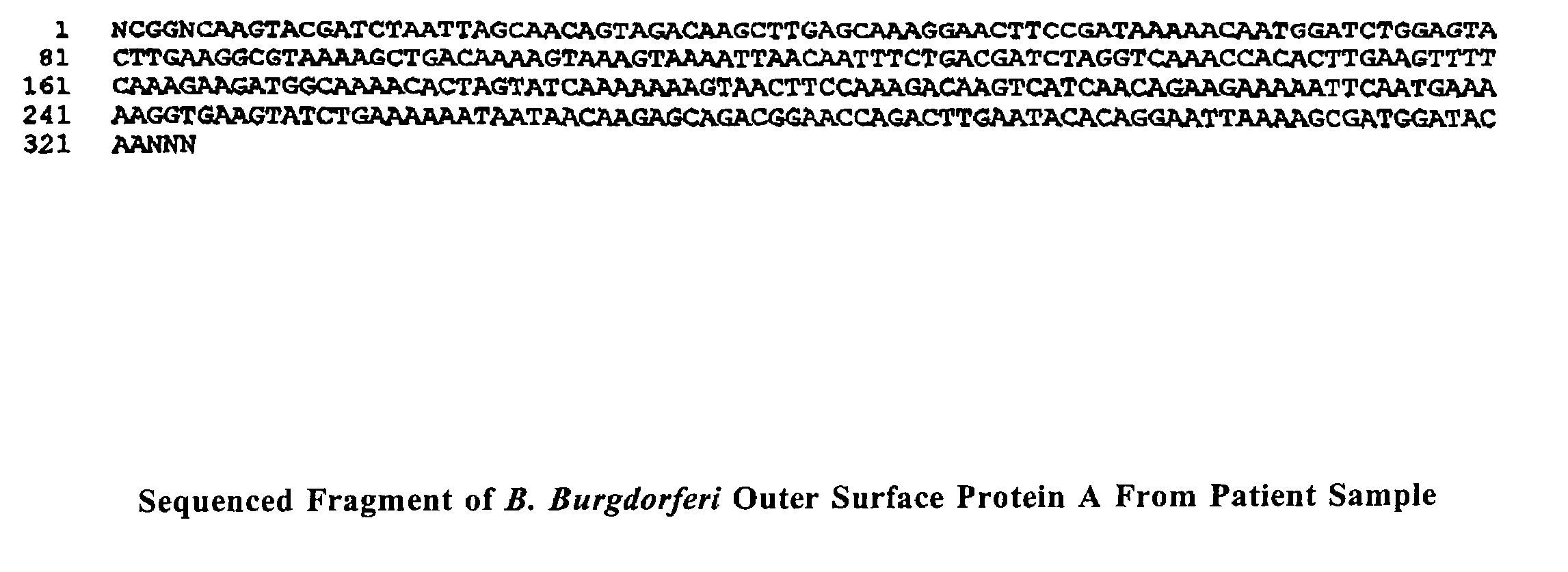Methods and compositions for culturing spirochete and treating spirochetal diseases
a technology of spirochetes and compositions, applied in the field of methods and compositions for culturing spirochetes and treating spirochetal diseases, can solve the problems of difficult culture of spirochetes, high difficulty in skill and experience, and serious diseases in humans and other animals
- Summary
- Abstract
- Description
- Claims
- Application Information
AI Technical Summary
Benefits of technology
Problems solved by technology
Method used
Image
Examples
example 1
Preparation of GSI-1 Spirochete Culture Medium
[0101]This Example describes the preparation of a one liter sample of the GSI-1 type Spirochete culture medium of the present invention. The various components used to make the media and their respective concentrations are listed below in Table 1.
[0102]
TABLE 1Components Used to Make 1 Liter of GSI-I MediumCategoryComponentAmountSugars (Sigma)Glucose1.250g / LSucrose1.000g / LFructose1.300g / LLactose1.250g / LMannose1.200g / LSalts (Sigma)Sodium Chloride9.000g / LPotassium Chloride1.800g / LLithium Chloride0.500g / LCalcium Chloride-2H2O0.185g / LMagnesium Sulfate0.100g / L(anhydrous)Potassium Phosphate0.060g / Lmonobasic (anhydrous)Sodium Phosphate Dibasic0.050g / L(anhydrous)Nitrogen (Difco)Peptone2.220g / LNeopeptone1.998g / LMetallic CationsManganese0.052g / L(Sigma)Magnesium0.044g / LInsulinSITE + 3 Liquid Media0.500ml / LComponentsSupplement(Sigma)N 1 Medium Supplement0.250ml / LAmino AcidsRPMI 1640 (50 X)1.000ml / L(Sigma)MEM Essential Amino Acids10.000g / LMEM Non-Esse...
example 2
Inoculating GSI-I Medium with a Sample
[0106]This examples describes inoculating GSI-1 medium with a sample in order to culture spirochetes. To culture microorganisms on GSI-I, 80% media is used for a 20% amount of inoculum (whether it be water or body fluids like serum, urine, cerebrospinal fluid, synovial fluid, semen, amniotic fluid, or fetal cord blood). In this example, a sterile flask is assembled within a class II laminar flow hood along with the refrigerated GSI-1 culture medium prepared according to Example 1 and a patient serum sample in a capped test tube. The 80% volume of GSI-1 media is aseptically transferred or pipetted into the sterile flask. The media is then recapped and placed back into the refrigerator for storage. The test tube with the patient serum sample is then uncapped, and the 20% of serum is aseptically placed within the sterile flask containing sterile GSI-1 media. The flask is then capped to ensure a microaerophilic growth environment and incubated at ro...
example 3
Use of GSI-1 Media to Screen for Spirochetes
[0108]This example describes screening of inoculated GSI-1 medium for the presence of Treponema, Borrelia, and Leptospira. Five serum samples previously confirmed by assay for RPR (rapid plasma reagin) and MHA-TP (microhemagglutination assay for T. pallidum) were used in these experiments. Each of the five samples were inoculated in GSI-1 (e.g., in the manner described in Example 2). At inoculation, less than one organism per field was observed by phase contrast microscopy in these culture samples. The cultures were allowed to grow for 21 days at 37° C. Each of the cultures was then assayed using T. pallidum specific indirect and direct immunofluorescence antibody staining. Dilutions of 1:10 and 1:20 were performed with the appropriate controls (e.g., negative controls such as blanks and Leptospira antigen and positive controls such as a T. pallidum positive slide). After application, the reaction was allowed to incubate for 45 minutes at ...
PUM
 Login to View More
Login to View More Abstract
Description
Claims
Application Information
 Login to View More
Login to View More - R&D Engineer
- R&D Manager
- IP Professional
- Industry Leading Data Capabilities
- Powerful AI technology
- Patent DNA Extraction
Browse by: Latest US Patents, China's latest patents, Technical Efficacy Thesaurus, Application Domain, Technology Topic, Popular Technical Reports.
© 2024 PatSnap. All rights reserved.Legal|Privacy policy|Modern Slavery Act Transparency Statement|Sitemap|About US| Contact US: help@patsnap.com








